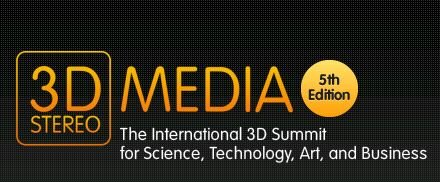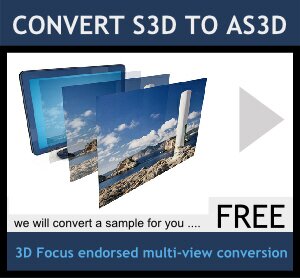
During the FUTURE 3DTV: 4K, Glasses-Free and Beyond! session at yesterday’s 3D Creative Summit event, Andy Quested from the BBC said that the viewing figures for BBC 3D output reduces each time a show is broadcast.
Joined by Chris Johns from Sky, Roland Vlaicu from Dolby and Richard Mills from ONSIGHT, the chief technologist HD & 3D, BBC Technology, casted a shadow over an otherwise optimistic conference at the BFI.
As part of a two year trial, the BBC has been broadcasting 3D programming across a range of genres including Strictly Come Dancing, Mr Stink and Walking with Dinosaurs. The trial will end this summer, just days before the 2013 3D broadcast of the Wimbledon Tennis Championships, which in itself is the end of a three year trial between Sony and the All England Tennis Lawn Club.
He said that the BBC was very excited when they started the trial but that each time a 3D show was broadcast, the ‘spike’ got lower, despite the growth in potential audiences.
He referred to the London Olympics Opening Ceremony, broadcast in 3D on the BBC HD channel, which reached an impressive 50% of the 3DTV owning audience. This dropped massively for the daily Olympics highlights package with an average of just 4000 viewers preferring the 3D version.
Last year’s 3D broadcast of the Queen’s speech and the BBC's first 3D comedy drama, Mr Stink only appealed to 10% of the potential audience.
“We start to see that the figures are falling and that is a real worry as a public service broadcaster. We have to justify the money. Is it a something we should leave to private broadcasters?… I don’t think we will see a 3D channel launch at all on the BBC."
Quested also revealed that independent surveys commissioned by the BBC still point towards the glasses as being the biggest barrier to 3D take-up, accounting for over 50%. There other two is the cost of the production and the cost of delivering the additional format (across the various devices).
Although he said there are now 1.5 million 3D ready TVs in the UK, Quested suggested that people were not buying them because they wanted 3D, rather because it now a default feature in most modern TVs that is now demoted below HD and connectivity in sales rooms. Also, many of the sets sold still do not include glasses.
Ending on a more optimistic note, he did say that glasses free 3D TV is making good progress: "[Glasses free 3D] is the technology that is needed to make it a compelling experience, especially in an era where people constantly multi-task. When you see A3D it takes a little getting used to but you certainly miss it when it is not there.”
FREE WEEKLY 3D NEWS BULLETIN –
When asked if consumers had the space to accommodate massive Ultra HD TV sets, Quested called upon an interesting piece of research conducted eight years ago by the BBC R&D department that suggested there will be: “Eight years ago there was a whitepaper done by a very esteemed body that suggested the maximum viable screen size in a domestic situation would be 36 inches. BBC R&D are trying to bury it very rapidly but it is still online. I don’t think there is any difference between us in the UK and anywhere else in the rest of the world. We will buy the biggest telly we can get through our door. .. Our problem as broadcasters will be to supply multiple content for multiple screens in multiple viewing environments."
The 3D Creative Summit continues today.
FREE WEEKLY 3D NEWS BULLETIN –
























